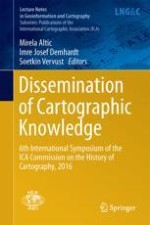This book gathers 22 papers which were presented at the 6th International Symposium of the ICA Commission on the History of Cartography in Dubrovnik, Croatia on 13–15 October 2016. The overall conference theme was ‘The Dissemination of Cartographic Knowledge: Production – Trade – Consumption – Preservation’. The book presents original research by internationally respected authors in the field of historical cartography, offering a significant contribution to the development of this field of study, but also of geography, history and the GIS sciences. The primary target audience includes researchers, educators, postgraduate students, map librarians and archivists.
